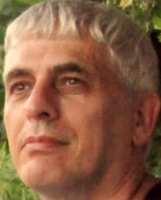
Eyal Seroussi
Agricultural Research Organization, Israel
Title: Application of pancreatic Phospholipase A2 for treatment of bovine mastitis
Biography
Biography: Eyal Seroussi
Abstract
Secreted-phospholipases-A2s (sPLA2s) have anti-inflammatory functions, including relief of symptoms in a mouse model of mastitis. To investigate the therapeutic application of sPLA2s for bovine mastitis, we initially applied PLA2G1B onto bovine-mammary-epithelial-cell (BMEC) line PS revealing no changes in cell viability or cytokinesecretion pattern. However, when cells were first treated with lipopolysaccharide endotoxin (LPS) or live bacteria (Escherichia coli or Staphylococcus aureus), incubation with PLA2G1B significantly improved cell viability, suggesting involvement of sPLA2s in protecting membranes from lipid-peroxidation damage, rather than a bactericidal action. When PLA2G1B was applied simultaneously with LPS, a significant short-term reduction in interleukin-8 secretion was observed compared with BMECS treated only with LPS, supporting previous reports that PLA2G1B affects interleukin-8 signaling. Following this favorable outcome, we tested PLA2G1B in-vivo by mammary infusion into infected glands. In one of a small sample (n=4) of lactating cows chronically infected with Streptococcus dysgalactiae, a single PLA2G1B treatment completely cleared inflammation and bacteria, demonstrating its potential to cure subclinical mastitis. Such mastitis may involve formation of resistant biofilms and its elimination may relate to sPLA2s' ability to aggregate with cellular debris, facilitating their internalization by macrophages. In a bovine model of clinical mastitis based on introduction of E. coli via the streak canal, an infusion of PLA2G1B led to faster recovery to pre-infection milk-yield levels and decrease of somatic-cell counts. In this case, all of sPLA2s' modes of resolving inflammation may apply, including competitive binding of the sPLA2s’ receptor, the inactivation of which confers resistance to endotoxic shock. This study supports further research into PLA2G1B as a cure for mastitis.

